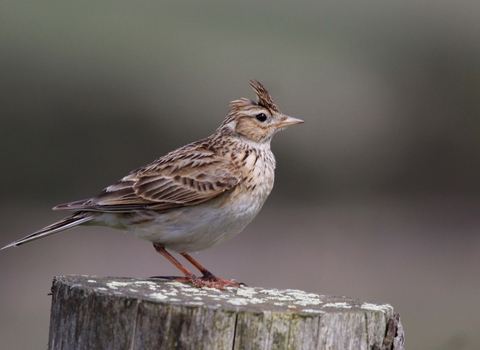
©Margaret Holland
Skylark
The song of the skylark has been the subject of many great musical and literary works. A quintessential feature of our farmland and grasslands habitats, it is declining rapidly with habitat loss.
Scientific name
Alauda arvensisWhen to see
January to DecemberSpecies information
Statistics
Length: 18cmWingspan: 33cm
Weight: 35-42g
Average lifespan: 2 years
Classified in the UK as Red under the Birds of Conservation Concern 5: the Red List for Birds (2021).
